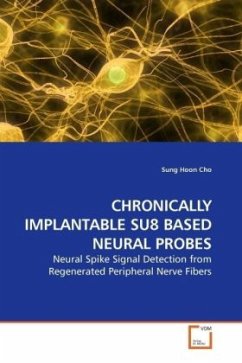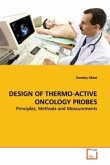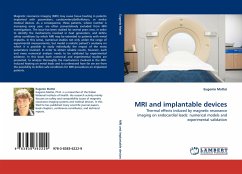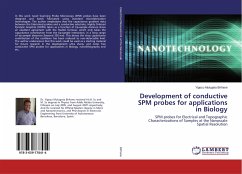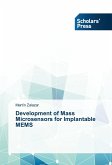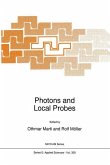Various types of SU-8 based microprobes were proposed, fabricated and optimized to record action potentials from the regenerated nerves. The shape and the fabrication process of the 3-D standing microprobe were relatively simple, but there were difficulties in fabricating electrodes and wire interconnection. The planar microprobe also had difficulties in wire interconnection. The straight and J-shaped probes were devised and fabricated. The channel structure was designed to guide the regenerated axons to be placed on the surface of the gold electrode and capture spike signals from the regenerated axons. The gold pads and holes were also devised for wire interconnection, and flexible wings were added to the probe body for stability. Satisfactory results were achieved in the biocompatibility tests. The probes were wired and implanted into the BNRG that was filled with NGF. The BNRG was implanted near the amputated peripheral nerve of a laboratory rat, and spike signals from the regenerated axons were successfully detected. The microprobes have detected spike signals consistently with stability for more than 6 months.
Bitte wählen Sie Ihr Anliegen aus.
Rechnungen
Retourenschein anfordern
Bestellstatus
Storno

